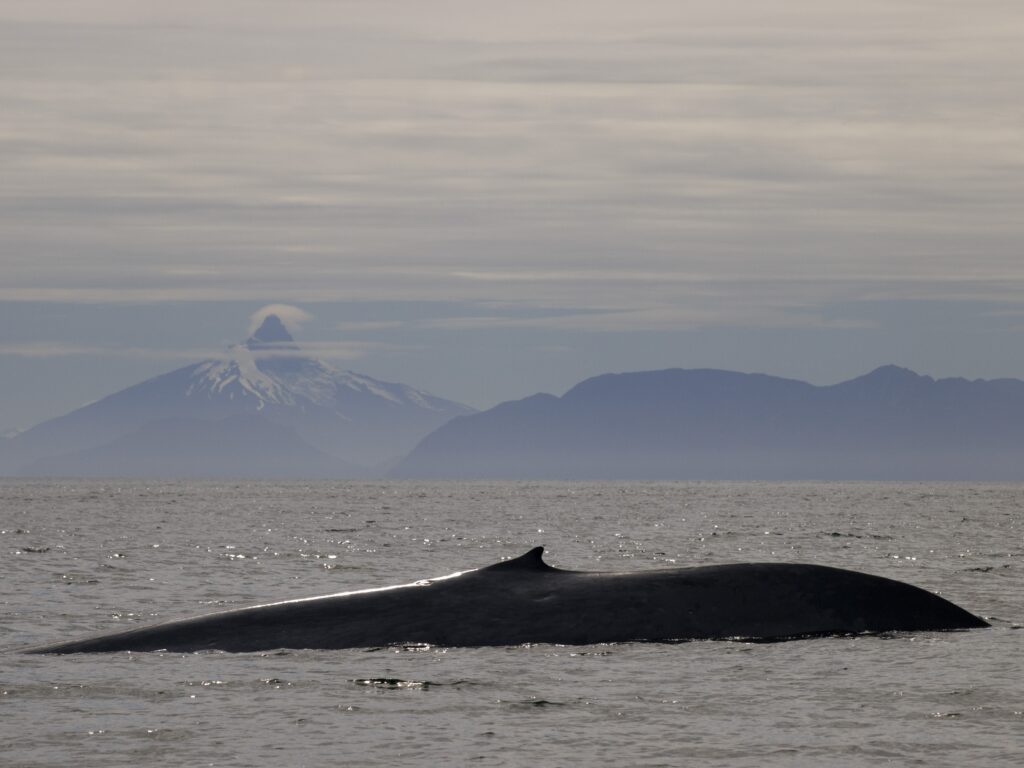Prioritizing Finance Mechanisms
Please note: the terms "mechanism" and "instrument" are used interchangeably in this toolkit.
The Blue Nature Alliance has developed a three-step process for marine managers and practitioners to identify, prioritize, and design implementation plans (or "roadmaps") for financial instruments best suited for a specific MPA, other effective area-based conservation measure (OECM), or protected area network:
- Collect country data to assess financial instruments
- Rank and prioritize instruments against criteria and feasibility
- Create an implementation roadmap for prioritized instruments
In this section, we will work through these three steps in more detail, drawing on a case study from Chile to demonstrate the process. There are many—often similar to the Blue Nature Alliance methodology—approaches and resources available to marine managers looking to identify and prioritize funding streams for their protected areas. Please check the resource links at the bottom of this page for additional resources that can guide you as you implement your own planning. It is also important to note that, in most cases, MPA managers will need to find technical assistance from an outside agency or consultancy in order to enact an MPA financing plan.
1. Collect Data
For each MPA site or system, collect data on enabling factors for each finance instrument. Both quantitative and qualitative data should be gathered. Another way to think about quantitative vs. qualitative data is that you need to establish what the cost of management for your MPA will be (generally quantitative) at the same time that you assess the enabling conditions for effective and lasting management (broadly qualitative).
| EXAMPLES OF DATA TO GATHER | |
|---|---|
| Quantitative Data | Qualitative Data |
|
|
An essential preliminary step in collecting data is to cost out your management plan and create budget forecasts for your MPA. You can use preexisting budgets, but additional cost modeling will help you understand what your budget needs and financing gaps are. It is also important to project your budgets farther into the future than you typically might, to capture how costs will change over the course of time. Understanding how much funding you are trying to raise will greatly inform the instruments you should prioritize. Refer to the tables on the MPA Finance Mechanisms page of this toolkit for common financial instruments to consider.
When sourcing information on enabling conditions, questions to ask include:
- Are the MPA and surrounding communities ready to effectively use new financing from this instrument?
- Does the financing instrument meet the scale and funding needs of the MPA?
- Which instruments align with the phase of development of the MPA?
- How complex is the instrument, and will that fulfill the necessary timeline for implementation?
- What funding instruments are already being used at the site or in the country or region?
- Are there publicly-announced commitments to expand conservation or protection?
The goal of this step is to collate notes on enabling conditions for potential financing mechanisms for the target MPA. You may not be able to find all the data or information that you are looking for, but the more that you are able to collate, the better-informed your decision will be. Also, do not forget to include your own awareness and knowledge as a key resource!
You will likely find that you can disqualify certain finance instruments as you make these initial considerations; as you do, there is no need to keep those instruments on your list.
Once your notes on the instruments you will be considering are collated, continue to Step 2.
2. Rank and Prioritize Funding Mechanisms
Consider the enabling conditions for each instrument and rank its feasibility and potential revenue. This will be on a relative scale; that is, rank each instrument as compared to the other instruments you are considering.
To visualize the information you have gathered, create a plot with feasibility on the y-axis and potential revenue on the x-axis. The higher on the y-axis, the more feasible a mechanism is, and the farther to the right on the x-axis, the higher the potential revenue.
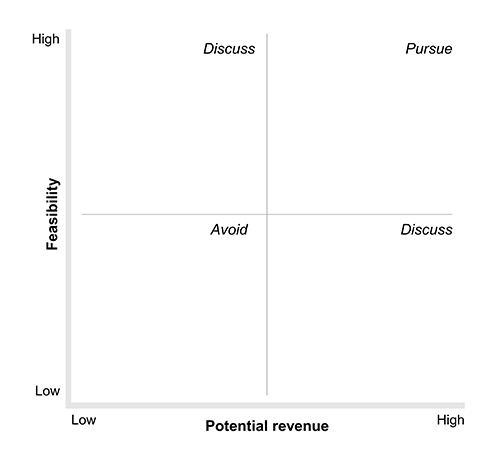
An example plot for visualizing the relative feasibility and potential revenue of financial instruments. Source: Blue Nature Alliance
Plot each instrument on a chart based on their relative values. Instruments that are furthest down and to the left should be avoided, those that are high on one axis but not the other should be discussed, and instruments that are high on both axes should be pursued. Through discussion and further exploration, your goal is to identify two to three highest-priority finance instruments to investigate further.
This exercise can be done easily as a group using Flipchart paper and sticky notes, a whiteboard and dry-erase markers, or online through a virtual whiteboard. The important part is to create a chart that is easy to reference and consult as you continue to strategize for MPA financing.
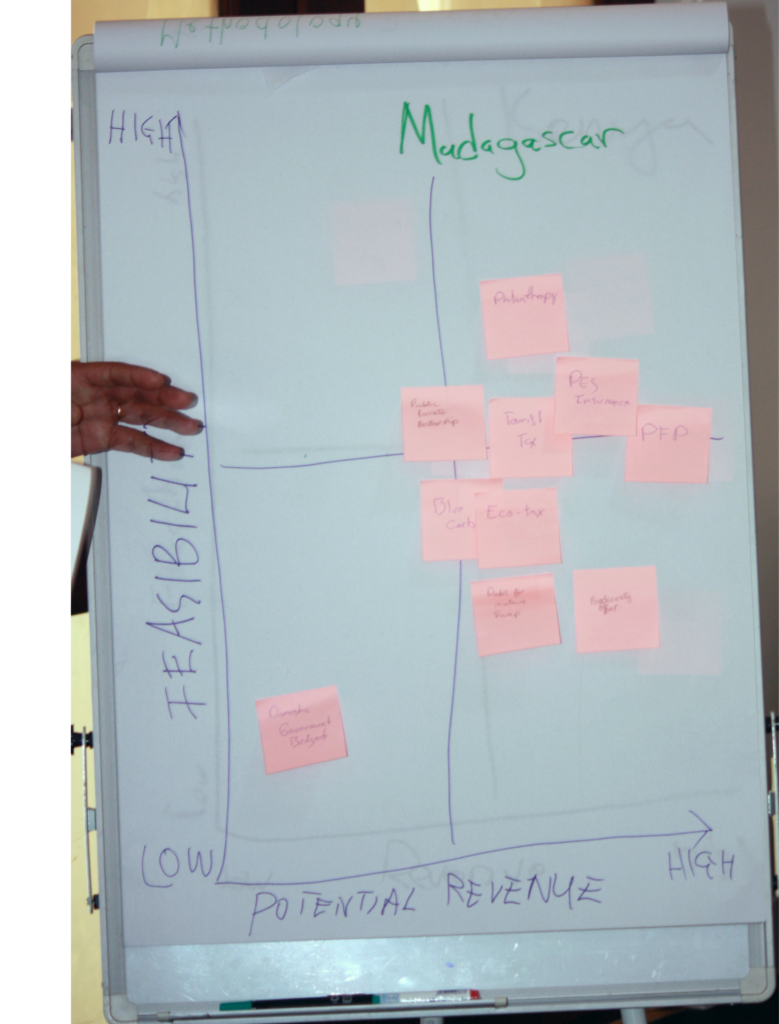
A chart created by a team from Madagascar at the Western Indian Ocean Marine Science Association-Blue Nature Alliance MPA Finance workshop Sept 2023. Photo © Blue Nature Alliance
3. Create Implementation Roadmaps
Now that you have 2-3 highest-priority finance instruments to strategize for, the last step of this process is to create a high-level roadmap for the pursuit of that funding. An "implementation roadmap" is a simple plan or outline that describes the likely route you will need to follow in order to create a finance instrument. Each instrument will get its own roadmap, spelling out 3-5 concrete actions to take in pursuit of the identified finance instrument. Be specific! While creating your roadmap, be sure to include at least these four considerations:
- Identify the different activities, donors, stakeholders (including industry, tourism, Indigenous Peoples and local communities), and decision-makers that will need to be involved.
- Determine existing finance instruments and consider how this new instrument will or won’t fit in with your current funding strategies.
- Evaluate the amount of revenue you expect to gain through this instrument. Include the cost and time commitment required to establish the instrument in your evaluation. Will you require other sources of funding in addition to this instrument? Are there other finance instruments that will work well with this one?
- Use existing data, analyses, and narratives to prepare proposals for the necessary audiences to embark upon pursuit of this finance instrument.
You can develop roadmaps with the support of a contractor/financial advisor and then undertake the actions yourself, or continue to work with a contractor/advisor to expand on and implement your roadmap to pursue a new financing mechanism for your MPA.
Blue Nature Alliance’s MPA Finance Planning Process in Practice: MPA Network Expansion in Chile
Representatives from Chile, working with Blue Nature Alliance, collected qualitative and quantitative data on enabling conditions for finance instruments in Chile. Following Steps 1 and 2 of the methodology, Blue Nature Alliance worked with a team of consultants to aggregate those data. Blue Nature Alliance then returned to various stakeholders in Chile to discuss the mechanisms and start prioritizing them, placing each instrument on a chart based on their feasibility and potential revenue.
Financing instruments that fell into the “pursue” category (deemed to have high potential in terms of feasibility and potential revenue) are highlighted in the instrument list in blue (see chart below). Chile's high economic development, high eco-tourism potential, and high MPA usage rates made grant-based and ecosystem-value based instruments most favorable. Two mechanisms (#2: Philanthropy and #11: Levies on Sustainable Use), were prioritized based on their high feasibility and high potential revenue.
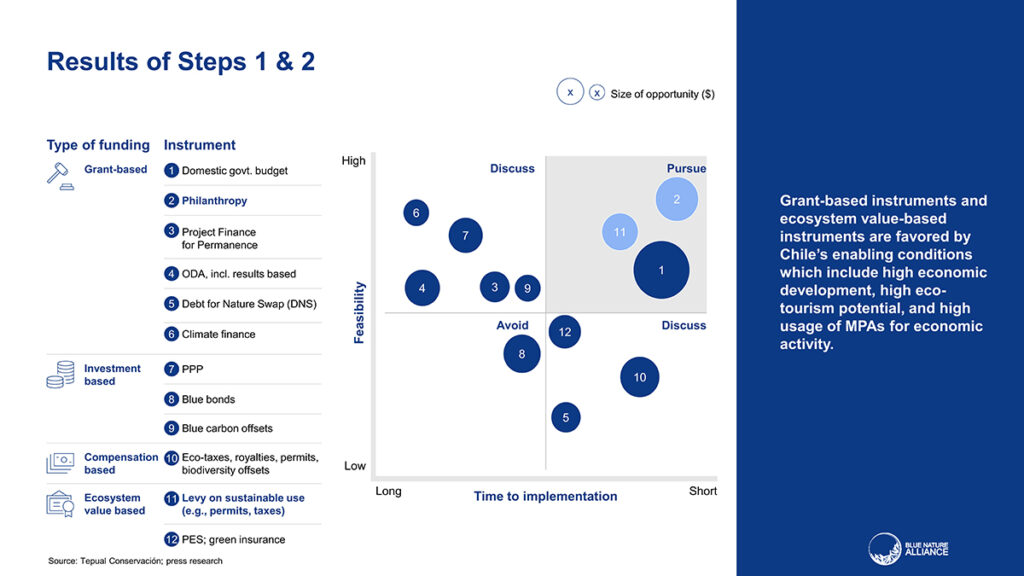
Chart showing various finance mechanisms sorted by feasibility and revenue potential. Source: Blue Nature Alliance
The prioritization exercises from Step 2 of the methodology identified two instruments to pursue further: philanthropy and levies on sustainable use.
Philanthropy
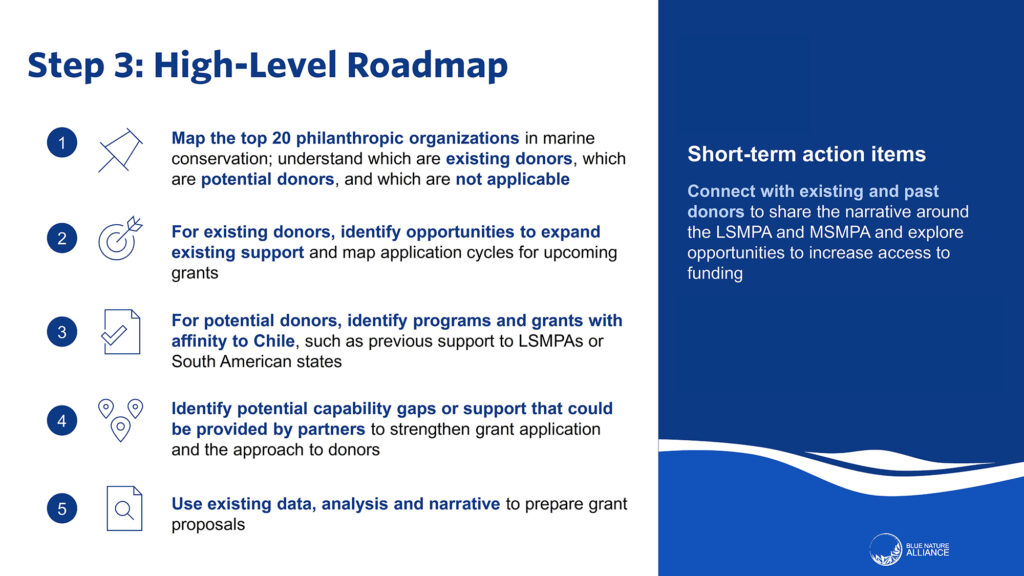
A roadmap for philanthropy in Chile spells out five actions to advance philanthropy for MPAs.
Further questions to consider about climate finance were included with the roadmap:
- Have there been any lessons learned from previous philanthropy access experiences?
- What could be the enabling conditions to unlock the philanthropy to be pursued?
- What are some key next steps to unlock funding through philanthropy?
- Which stakeholders would be needed to engage?
Levies on Sustainable Use
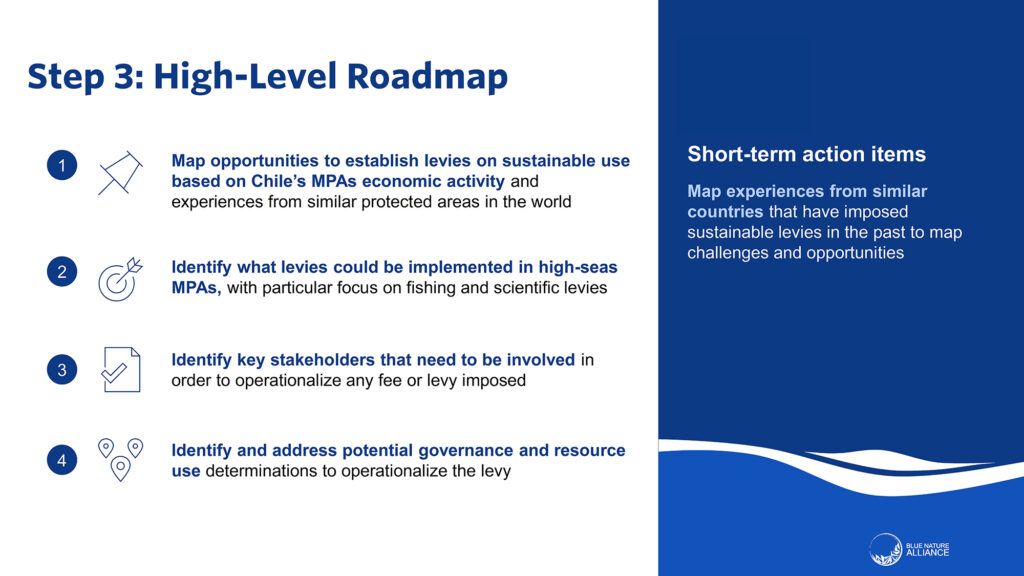
A roadmap for a levy on sustainable use in Chile maps out four actions to advance levies on sustainable use for MPAs.
Further questions about levies on sustainable use were included with the roadmaps:
- How could we get insights into lessons learned from this process, or a similar one to create a sustainable levy or fee?
- What could be the key next steps to unlock funding through this mechanism?
- Which stakeholders would be needed to engage?
The MPA Finance Toolkit was developed in partnership with the Blue Nature Alliance, a global partnership to catalyze effective large-scale ocean conservation. In September 2023, the Western Indian Ocean Marine Science Association and Blue Nature Alliance co-hosted an MPA finance workshop with marine managers in the Western Indian Ocean region. The resources presented in this toolkit were developed for and piloted by the managers in attendance.
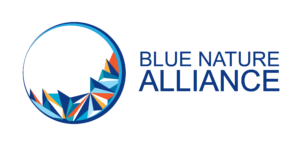
Resources
Bohorquez et al. 2022: A New Tool to Evaluate, Improve, and Sustain Marine Protected Area Financing
CSF: Introduction to Conservation Finance online course
ICRI: Finance mechanism training tools for coral reef conservation
UNEP: Marine Protected Area Tool Hub (MPAth)
Wolfs Company: Eco2Fin Sustainable Finance Tool for Protected Areas

